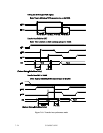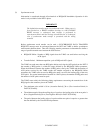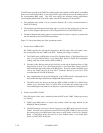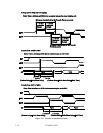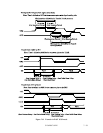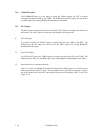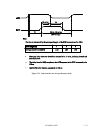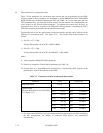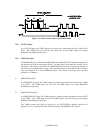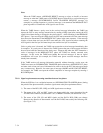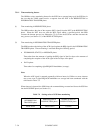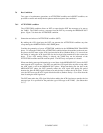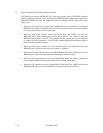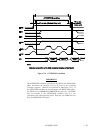
7 - 32 C156-E097-01EN
(4) Data transfer rate in synchronous mode
Table 7.8 lists parameters for synchronous data transfer that can be performed by the ODD.
Values assigned to these parameters are determined by SYNCHRONOUS DATA TRANSFER
REQUEST messages transferred between the INIT and TARG. In a system with more than one
INIT, parameters may vary from one INIT to another. The data transfer rate is determined by the
value assigned to the Transfer Period parameter. To maintain this transfer rate, however, an
appropriate value must be assigned to the REQ/ACK Offset parameter considering the INIT's
ACK pulse response performance and the interface cable length.
The formulas below give the approximate average data transfer rate that can be achieved on the
SCSI bus in synchronous mode. (See Figure 7.14.) The notation used in the formulas is as
follows:
1) If (n×T1) ≥ (T2 + 700),
Average data transfer rate in SCSI = 1000/T1 (MB/s)
2) If (n×T1) > (T2 + 700),
Average data transfer rate in SCSI = (n×1000)/(T2 + 700) (MB/s)
where,
n: Value assigned to REQ/ACK Offset parameter
T1: Value in ns assigned to Transfer Period parameter (see Table 7.8)
T2: Average time in ns from REQi pulse transmission to corresponding ACKi response at the
pertinent pins of the SCSI connector on the ODD
Table 7.8 Parameters used for synchronous data transfer
Parameter Value Transter rate
REQ/ACK Offset 1 to 16
X '0C' (50 ns) Max. 20.0 MB/s*
1
X '12' (75 ns) Max. 13.3 MB/s*
1
X '19' (100 ns) Max. 10.0 MB/s*
1
X '25' (150 ns) Max. 6.6 MB/s*
1
X '32' (200 ns) Max. 5.0 MB/s*
1
X '3E' (250 ns) Max. 4.0 MB/s*
1
X '4B' (300 ns) Max. 3.3 MB/s*
1
*1. If a single-ended SCSI bus is used, the maximum transfer rate must be specified considering
the bus configuration, the number of connected SCSI devices, and transmission
characteristics.
Transfer Period
(Minimum REQ Interval sent from ODD)
(T1 in Figure 7.17)



